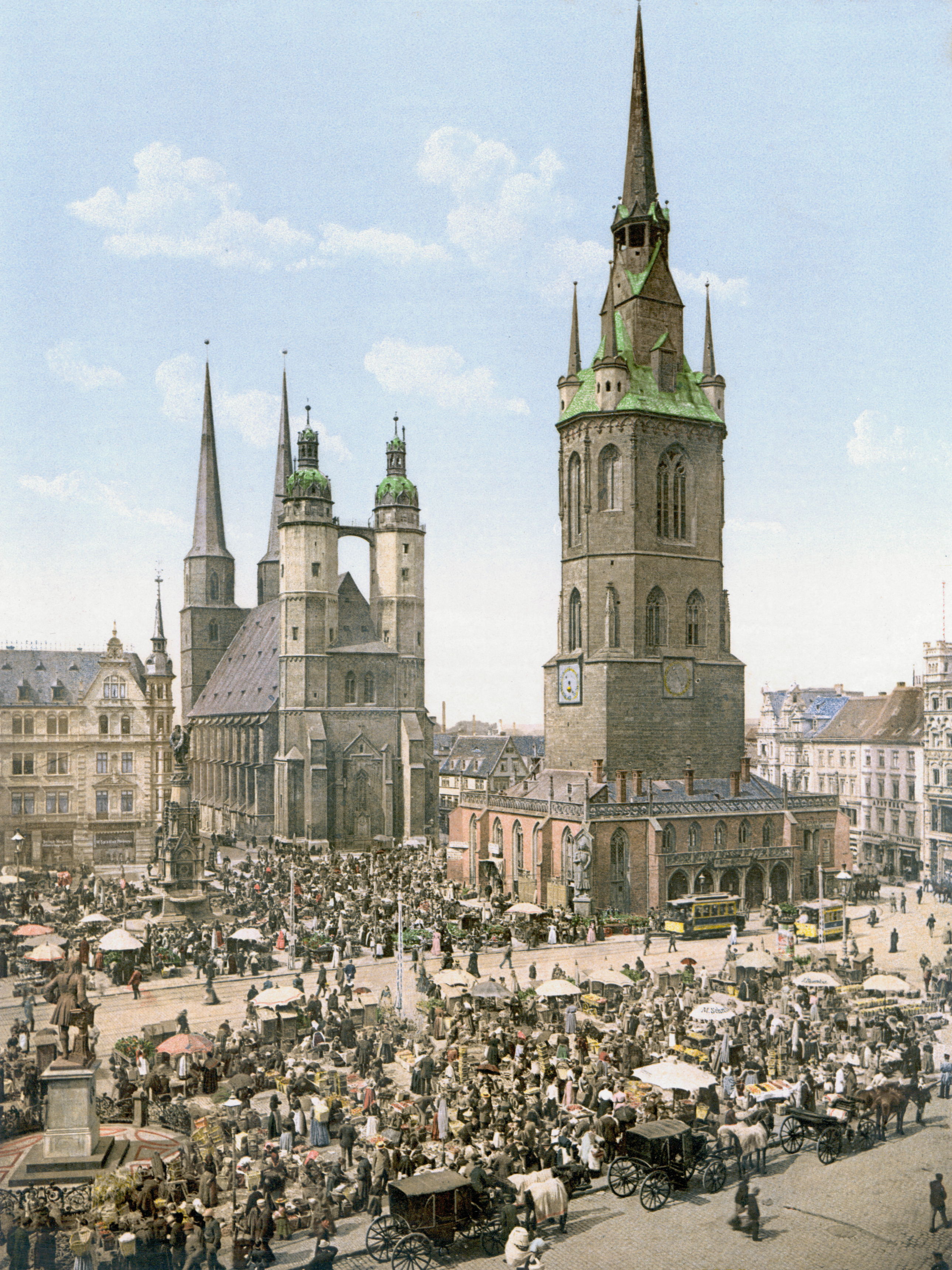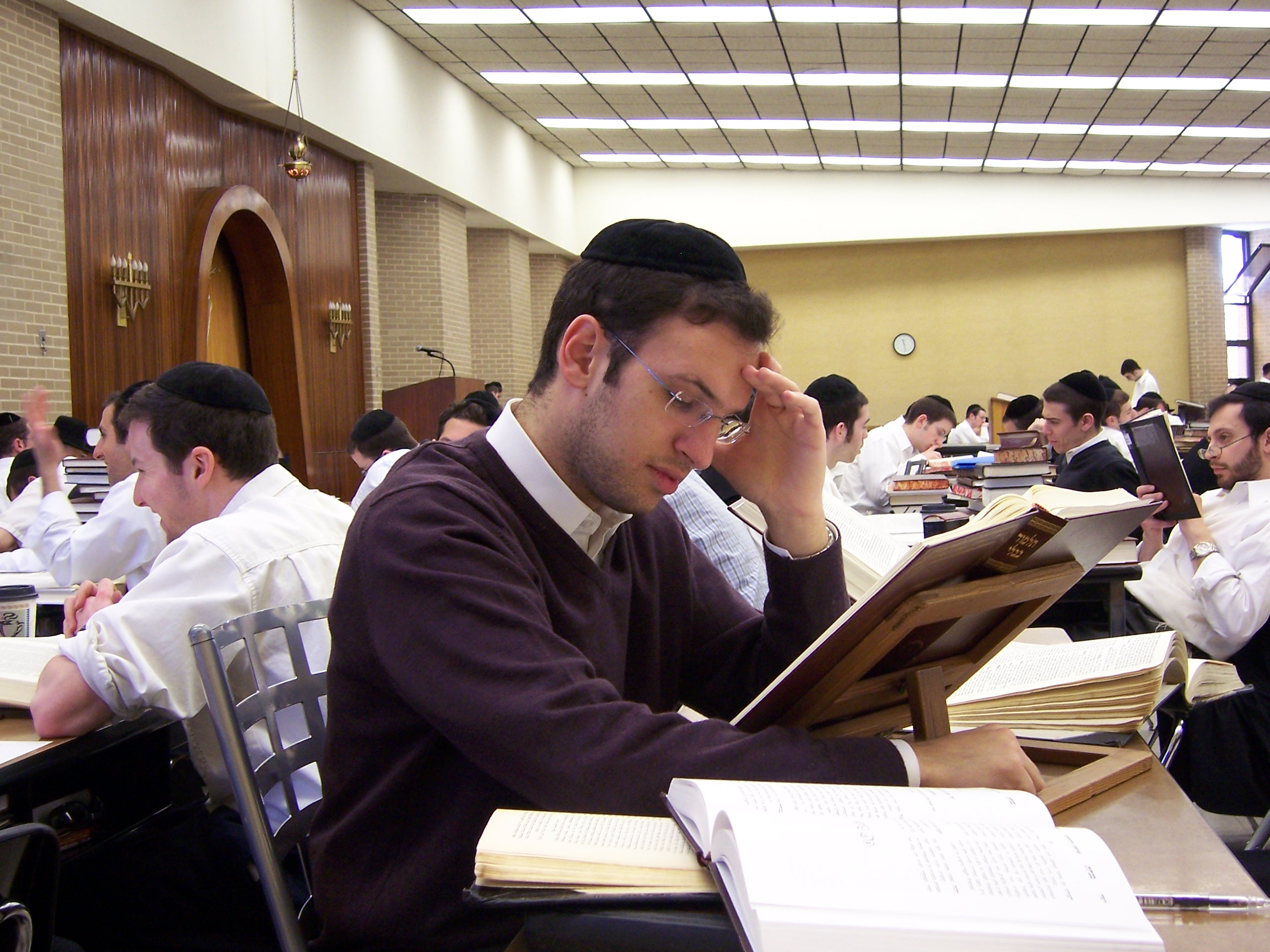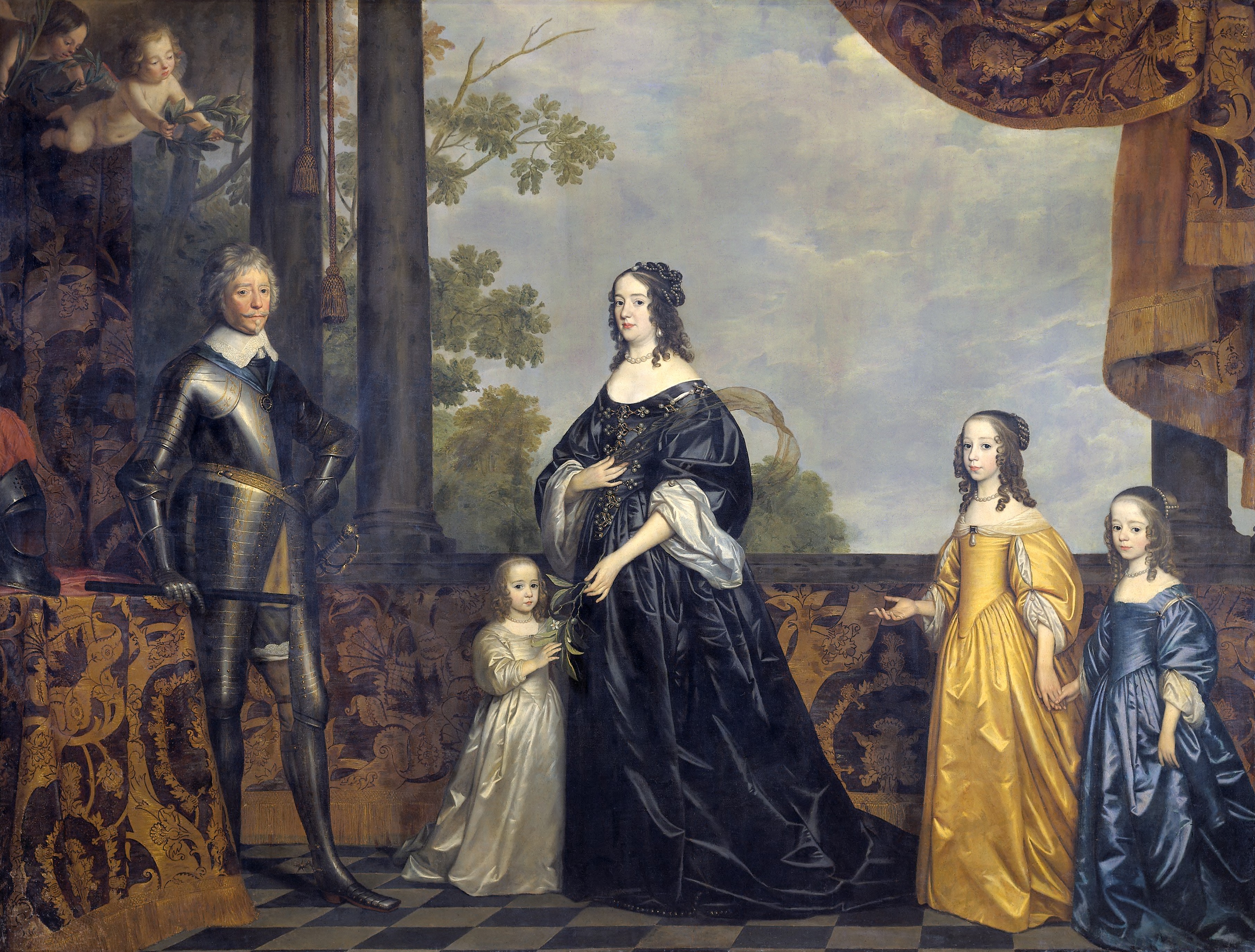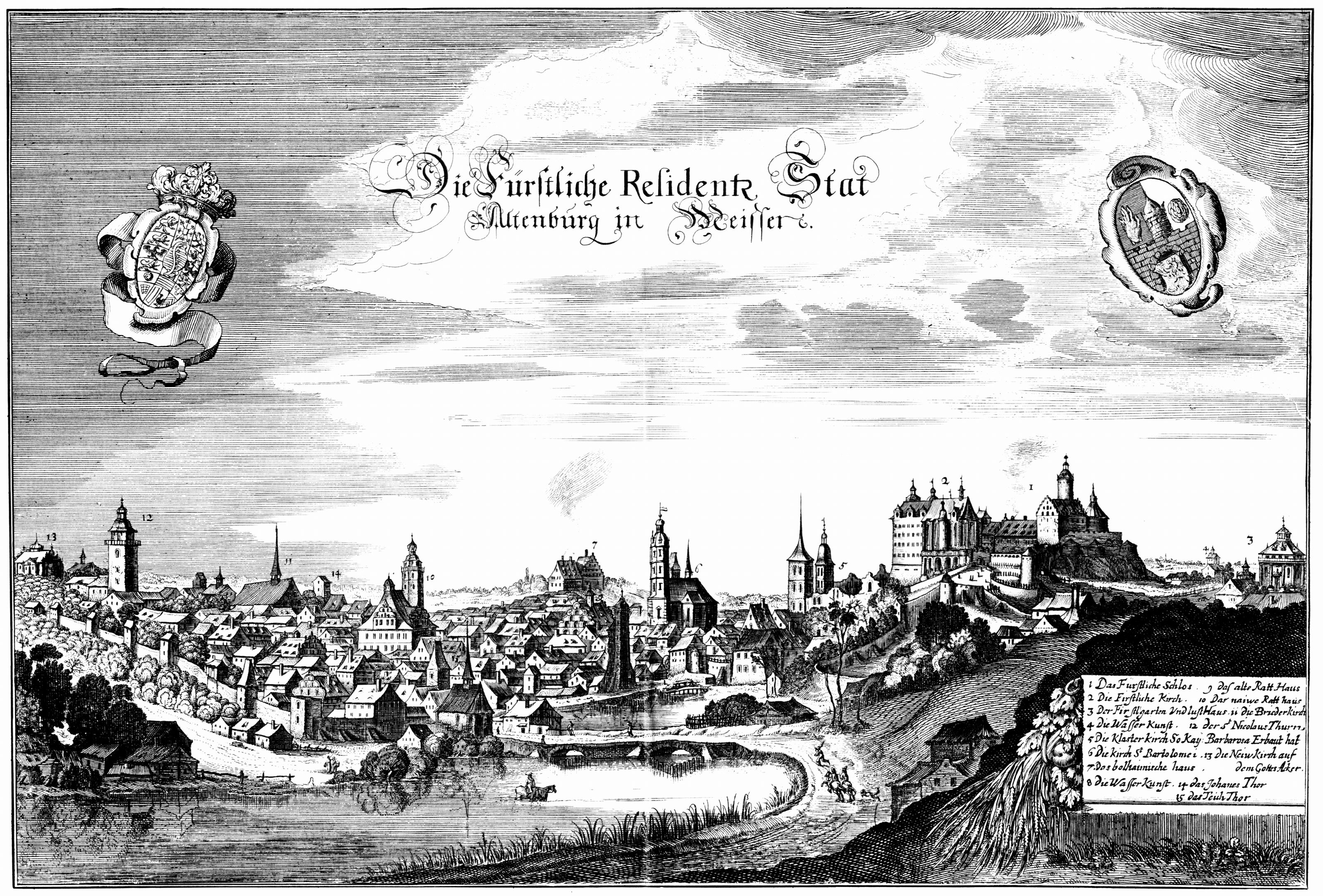|
Moses Benjamin Wulff
Moses Benjamin Wulff (1661–1729) was a Court Jew to Prince Leopold of Anhalt-Dessau, where he dealt in political administration and diplomatic affairs of the German region. Biography Wulff was a descendant of the ''Rema'', Moses Isserles, through his grandfather Simon Wolf of Vilna. Simon Wolf and his family had fled the Cossacks in the 1650s and found refuge in Hamburg. One of Simon's daughters, Driezel, married Judah Wahl Katzenellenbogen, ancestor of Moses Mendelssohn, and another daughter married Shabbatai HaKohen. Simon's other son, Moses' father, Simha Bunim Benjamin Wulff (d. 1696), was a tobacco merchant. Simha Bunim feigned conversion to Catholicism fleeing the pogroms, but reverted to Judaism in Hamburg. Later he moved to Halberstadt and from there to Berlin, where he was in debt. His son Moses, called the "Tall Jew" due to his stature, married his cousin Zipporah, when both were age 17. Zipporah was the daughter of Berend (Barukh Minden) Wulff, another child of Si ... [...More Info...] [...Related Items...] OR: [Wikipedia] [Google] [Baidu] |
Court Jew
In early modern Europe, particularly in Germany, a court Jew (, ) or court factor (, ) was a Jewish banker who handled the finances of, or lent money to, royalty and nobility. In return for their services, court Jews gained social privileges, including, in some cases, being granted noble status. Examples of what would be later called court Jews emerged in the High Middle Ages when the royalty, the nobility, and the church borrowed money from money changers or employed them as financiers. Among the most notable of these were Aaron of Lincoln and Vivelin of Strasbourg. Jewish financiers could use their family connections to provide their sponsors with finance, food, arms, ammunition, gold and other precious metals. The rise of the absolute monarchies in Central Europe brought many Jews, mostly of Ashkenazi origin, into the position of negotiating loans for the various courts. They could amass personal fortunes and gain political and social influence. However, the court Jew ha ... [...More Info...] [...Related Items...] OR: [Wikipedia] [Google] [Baidu] |
Holy Roman Empire
The Holy Roman Empire, also known as the Holy Roman Empire of the German Nation after 1512, was a polity in Central and Western Europe, usually headed by the Holy Roman Emperor. It developed in the Early Middle Ages, and lasted for a millennium until its Dissolution of the Holy Roman Empire, dissolution in 1806 during the Napoleonic Wars. For most of its history the Empire comprised the entirety of the modern countries of Germany, Czechia, Austria, the Netherlands, Belgium, Switzerland, Slovenia, and Luxembourg, most of north-central Italy, and large parts of modern-day east France and west Poland. On 25 December 800, Pope Leo III crowned the Frankish king Charlemagne Roman emperor, reviving the title more than three centuries after the fall of the Western Roman Empire in 476. The title lapsed in 924, but was revived in 962 when Otto I, OttoI was crowned emperor by Pope John XII, as Charlemagne's and the Carolingian Empire's successor. From 962 until the 12th century, the empire ... [...More Info...] [...Related Items...] OR: [Wikipedia] [Google] [Baidu] |
Israel Ben Abraham
Israel, officially the State of Israel, is a country in West Asia. It Borders of Israel, shares borders with Lebanon to the north, Syria to the north-east, Jordan to the east, Egypt to the south-west, and the Mediterranean Sea to the west. Israeli-occupied territories, It occupies the Occupied Palestinian territories, Palestinian territories of the West Bank in the east and the Gaza Strip in the south-west. Israel also has a small coastline on the Red Sea at its southernmost point, and part of the Dead Sea lies along its eastern border. Status of Jerusalem, Its proclaimed capital is Jerusalem, while Tel Aviv is the country's Gush Dan, largest urban area and Economy of Israel, economic center. Israel is located in a region known as the Land of Israel, synonymous with the Palestine (region), Palestine region, the Holy Land, and Canaan. In antiquity, it was home to the Canaanite civilisation followed by the History of ancient Israel and Judah, kingdoms of Israel and Judah. Situate ... [...More Info...] [...Related Items...] OR: [Wikipedia] [Google] [Baidu] |
Halle (Saale)
Halle (Saale), or simply Halle (), is the second largest city of the States of Germany, German state of Saxony-Anhalt. It is the sixth-most populous city in the area of former East Germany after (East Berlin, East) Berlin, Leipzig, Dresden, Chemnitz and Magdeburg as well as the List of cities in Germany by population, 31st-largest city of Germany. With around 226,000 inhabitants, it is less populous than the state capital, Magdeburg. With Leipzig, the largest city of Saxony, Halle forms the polycentric metropolitan area, polycentric Leipzig-Halle conurbation. Leipzig/Halle Airport, Leipzig/Halle International Airport lies between the two cities, in Schkeuditz. The Leipzig-Halle conurbation is at the heart of the larger Central German Metropolitan Region. Halle has been known by many names throughout its history. From the 15th to the 17th century: ''Hall in Sachsen''. From then until the beginning of the 20th century, the name Halle an der Saale was used, and still remains a more ... [...More Info...] [...Related Items...] OR: [Wikipedia] [Google] [Baidu] |
Moses Ben Avraham Avinu
Moses ben Avraham Avinu (died ca. 1733/34) was a Czech- Austrian printer and author who was a Christian convert to Judaism. His father, Jacob, was also a convert. Moses was born at Nikolsburg (now Mikulov). He became a native of Prague, and was circumcised at Amsterdam. In 1686–87, he worked for two printers of Amsterdam, but from 1690 to 1694 seems to have owned a printing establishment and to have printed several Hebrew books, including his own Judeo-German translation of Hannover's ''Yewen Mezulah''. He assisted with the engravings for the 1695 Passover Haggadah The Haggadah (, "telling"; plural: Haggadot) is a foundational Jewish text that sets forth the order of the Passover Seder. According to Jewish practice, reading the Haggadah at the Seder table fulfills the mitzvah incumbent on every Jew to rec ..., which was printed by Kosman Emrich. In 1709, Moses established a printing-office in the German town of Halle, where in 1712 he printed his ''Tela'ot Moshe'' (or "We ... [...More Info...] [...Related Items...] OR: [Wikipedia] [Google] [Baidu] |
Beit Midrash
A ''beth midrash'' (, "house of learning"; : ''batei midrash''), also ''beis medrash'' or ''beit midrash'', is a hall dedicated for Torah study, often translated as a "study hall". It is distinct from a synagogue (''beth knesseth''), although the two are often coextensive. In Yiddish the ''beth midrash'' may be referred to as a ''zal'', i.e. "hall". ''Beis midrash'' can also refer to a yeshiva gedolah, the undergraduate-level program in Orthodoxy, for boys over 12th grade. The Arabic term "madrasah" is derived from the same Semitic root, and refers to any type of educational institution. The root דרש means "to seek nowledge and is then generalized to mean "expound". History Early rabbinic literature, including the Mishnah, makes mention of the ''beth midrash'' as an institution distinct from the '' beth din'' and Sanhedrin. It was meant as a place of Torah study and interpretation, as well as the development of ''halakha'' (the practical application of the Jewish Law). ... [...More Info...] [...Related Items...] OR: [Wikipedia] [Google] [Baidu] |
Countess Henriette Catharina Of Nassau
Henriette Catherine of Nassau (Dutch language, Dutch: ''Henriëtte Catharina,'' German language, German: ''Henriette Katharina''; 10 February 1637 – 5 November 1708) was princess consort of Anhalt-Dessau by marriage to John George II, Prince of Anhalt-Dessau, and regent of Anhalt-Dessau from 1693 to 1698 during the minority (and then the absence) of her son Leopold I, Prince of Anhalt-Dessau. Life Henriette was born in The Hague as a member of the House of Orange-Nassau, being the seventh of nine children born to Frederick Henry, Prince of Orange and Amalia of Solms-Braunfels. Some of her siblings died in childhood. Henriette and four other siblings lived to adulthood, her surviving siblings were: William II, Prince of Orange, Luise Henriette of Nassau, Countess Albertine Agnes of Nassau, Albertine Agnes of Nassau and Maria of Nassau (1642-1688), Maria of Nassau. Princess consort of Anhalt-Dessau The Thirty Years War had left Germany in ruins but the Netherlands under the rei ... [...More Info...] [...Related Items...] OR: [Wikipedia] [Google] [Baidu] |
Kloyz
A kloyz ( kloyzn; ) or a hesger ( hesgerim) was an Ashkenazi, Ottoman, or Italian Jewish house of study and worship popular during the 16th to 19th centuries. It is closely related to a beth midrash, though the two are different in the fact that unlike the often-public batei midrash, kloyzn were private and often regarded as elite institutions. Etymology The Yiddish term ''kloyz'' is derived from the German-language term ''die Klaus'' ( ''die Klausen''), itself derived from the Latin term ''claustrum'' or ''clausum'' (lit. ''"secluded place"''), defining a building or complex of structures relating to a monastery. History Kloyzn first began to emerge during the 16th century in the Polish–Lithuanian Commonwealth, around the same time as their equivalent, hesgerim, in the Ottoman Empire and the Italian peninsula. The concept of the kloyz grew out of the idea of the beth midrash and the decline of yeshivot, as the concept of a meeting place for a select few elite scholars. ... [...More Info...] [...Related Items...] OR: [Wikipedia] [Google] [Baidu] |
Frederick I Of Prussia
Frederick I (; 11 July 1657 – 25 February 1713), of the Hohenzollern dynasty, was (as Frederick III) List of margraves and electors of Brandenburg, Elector of Brandenburg (1688–1713) and Duke of Prussia in personal union (Brandenburg–Prussia). The latter function he upgraded to royalty, becoming the first King in Prussia (1701–1713). From 1707 he was in personal union the sovereign prince of the Principality of Neuchâtel. Biography Family Born in Königsberg, Frederick was the third son of Frederick William, Elector of Brandenburg by his father's first marriage to Louise Henriette of Orange-Nassau, eldest daughter of Frederick Henry, Prince of Orange and Amalia of Solms-Braunfels. His maternal cousin was King William III of England. Upon the death of his father on 29 April 1688, Frederick became Elector Frederick III of Electorate of Brandenburg, Brandenburg and Duchy of Prussia, Duke of Prussia. Right after ascending the throne Frederick founded a new city southerly ... [...More Info...] [...Related Items...] OR: [Wikipedia] [Google] [Baidu] |
Altenburg
Altenburg () is a city in Thuringia, Germany, located south of Leipzig, west of Dresden and east of Erfurt. It is the capital of the Altenburger Land district and part of a polycentric old-industrial textile and metal production region between Gera, Zwickau and Chemnitz with more than 1 million inhabitants, while the city itself has a population of 33,000. Today, the city and its rural county is part of the Central German Metropolitan Region. Altenburg was first mentioned in 976 and later became one of the first German cities within former Slavic area, east of the Saale river (as part of the medieval Ostsiedlung movement). The emperor Frederick I, Holy Roman Emperor, Frederick Barbarossa visited Altenburg several times between 1165 and 1188, hence the town is named a Barbarossa city, Barbarossa town today. Since the 17th century, Altenburg was the residence of different House of Wettin, Ernestine duchies, of whom the Duchy of Saxe-Altenburg, Saxe-Altenburg persisted until th ... [...More Info...] [...Related Items...] OR: [Wikipedia] [Google] [Baidu] |
Gotha
Gotha () is the fifth-largest city in Thuringia, Germany, west of Erfurt and east of Eisenach with a population of 44,000. The city is the capital of the district of Gotha and was also a residence of the Ernestine Wettins from 1640 until the end of monarchy in Germany in 1918. The House of Saxe-Coburg and Gotha originating here spawned many European rulers, including the royal houses of the United Kingdom, Belgium, Portugal (until 1910) and Bulgaria (until 1946). In the Middle Ages, Gotha was a rich trading town on the trade route ''Via Regia'' and between 1650 and 1850, Gotha saw a cultural heyday as a centre of sciences and arts, fostered by the dukes of Saxe-Gotha. The first duke, Ernest the Pious, was famous for his wise rule. In the 18th century, the '' Almanach de Gotha'' was first published in the city. The publisher Justus Perthes and the encyclopedist Joseph Meyer made Gotha a leading centre of German publishing around 1800. In the early 19th century, Gotha was a b ... [...More Info...] [...Related Items...] OR: [Wikipedia] [Google] [Baidu] |
Frederick I, Duke Of Saxe-Gotha-Altenburg
Frederick I, Duke of Saxe-Gotha-Altenburg (15 July 1646 – 2 August 1691), was a duke of Saxe-Gotha-Altenburg. He was born in Gotha, the fourth but eldest surviving son of Ernst I, Duke of Saxe-Coburg-Altenburg and Elisabeth Sophie of Saxe-Altenburg. When Ernst inherited the duchy of Saxe-Altenburg (1672), he made Frederick the regent of that duchy. In 1674 Ernst, who was already ill, made Frederick the regent of his entire lands. After the death of his father (1675) Frederick assumed the throne of both duchies. However, on the basis of his family's house law, he had to allow his six younger brothers to take part in the government. At first, they agreed to a common household of all seven brothers in the Schloss Friedenstein, though this arrangement endured only until 1676. Afterwards, negotiations began for the division of the paternal inheritance. This was finally accomplished on 24 February 1680; Frederick kept Gotha, Tenneberg, Wachsenburg, Ichtershausen, Georgen ... [...More Info...] [...Related Items...] OR: [Wikipedia] [Google] [Baidu] |





